Disclaimer: Wingsplain received an unsolicited free copy of Wingspan Asia. We thank Stonemaier Games for this generous gift.
Wingspan Asia Review
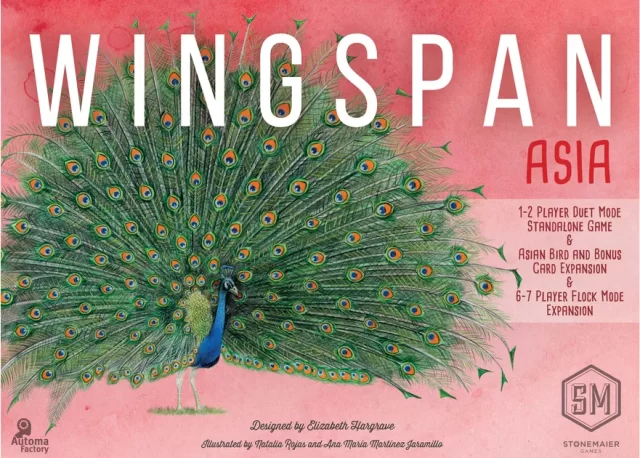
Wingspan Asia occupies an interesting space in the board game market. It exists as both a standalone game and an expansion to core Wingspan. Board Game Geek does not currently list it as an expansion to Wingspan. It has its own game page, just like a core set would.
This reminds me a lot of the DC Deck Building Game (DCDBG), another favorite of mine. Every expansion of DCDBG adds more cards that can be played with any other expansion and any Core Set while simultaneously introducing new game modes to broaden the things you can do with the cards you already have. These DCDBG expansions are not standalone games themselves, though, as they need one core set to function properly.
Interestingly enough, the naming convention used for Wingspan Asia caused me to ask Jamey Stegmaier (co-founder and lead developer at Stonemaier Games) if the lack of the word “expansion” in the game’s title meant that it was a new core set. This was very early in the “teasing” process of the game, and at that time, Jamey told me that it was not a new core set.
Fast forward to the full reveal, and we can see why the word “expansion” was left off of the title of the game. It was designed with a standalone experience in mind.
I think that Wingspan Asia is a core set in spirit, even if Stonemaier Games doesn’t want to call it that. You don’t actually need core Wingspan to play it (a feature of a new core set), but it also expands what core Wingspan can do, and you actually need it to play certain ways (a feature of an expansion).
You can expand Wingspan Asia with the European and/or Oceania expansions and ignore the core set entirely (another feature of a core set). Although this forces you into Duet Mode since you won’t have access to the traditional end-of-round scoring method included in the core set. It is a standard expansion-sized set of 90 bird cards, which falls in line with the size of previous Wingspan expansions.
When my wife and I played our first two games, we had no problem blowing through the small deck both times, as we both ended up employing some of the new “mass tucking” birds introduced in Wingspan Asia. Rosy Starling and Eurasian Coot were front and center, flexing their tucking powers on both of our boards in both of those games.
In one game, I was also able to employ Brambling and Twite simultaneously; two teal-powered birds that each draw two cards from the deck and then tucks two cards from your hand at the end of each round. In these situations, you really feel the need for more cards and the justification to have doubled the size of the bird card deck.
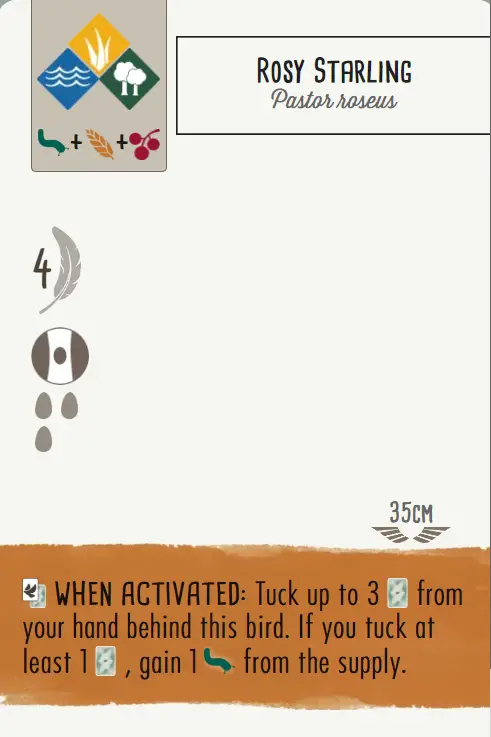
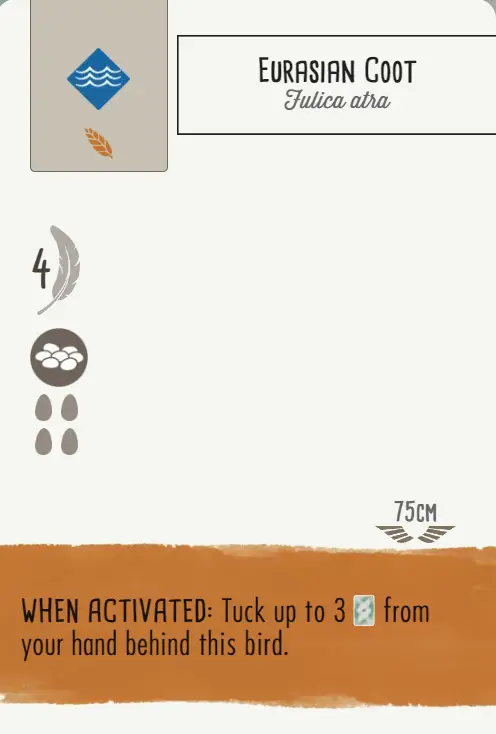
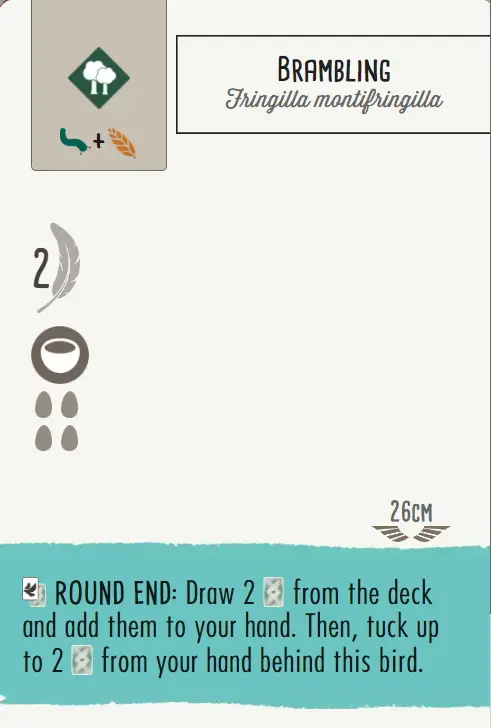
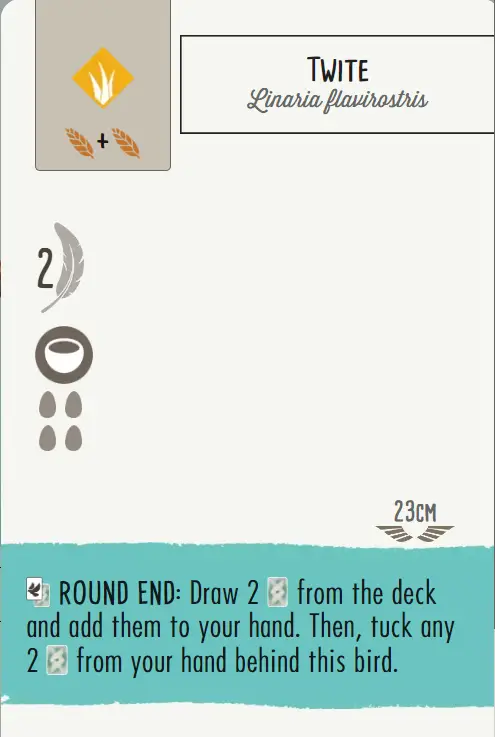
Images taken from Wingsearch.
My wife and I also felt that Wingspan Asia was lacking “some gas in the tank,” so to speak. Like it was missing a bit of meat on the bone, and we were missing the feeling of card power diversity that the other sets had given us.
Again, we felt the need for more cards and further justification for Wingspan Asia to have included 180 bird cards instead of 90. With such a deep roster of bird powers that tuck multiple cards per activation or cycle the bird card tray each activation, a 90-card deck doesn’t feel large enough for a standalone game.
On this note, we also played our first couple of games with the Oceania Expansion without the core set just to experience all of the new birds. That was a much more dull experience in comparison.
Contrasting my starting experience with Wingspan Asia against my starting experience with the Oceania Expansion, I could really tell that the bird powers in Asia were designed with a standalone experience in mind, and the bird powers in Oceania were not. Although we both felt Wingspan Asia as a set has some trouble generating food for us. I’ve seen this sentiment expressed by others in the community as well.
As a hardcore fan of the game, I would have gladly accepted a larger bird card deck and a higher price. This obviously would take a lot more work and time to develop, and with world events being what they were at the time, Elizabeth Hargrave (the creator of Wingspan) had publicly communicated that development and playtesting were negatively impacted.
I wonder if this troubling period in world history forced Stonemaier Games to make a tough business decision and truncate Wingspan Asia’s deck. Or maybe it was just Elizabeth’s schedule since she was also working on The Fox Experiment as well as her yet-to-be-named “Mother Tree/Mushroom” game.
I suspect that the true answer is that Jamey wanted a normal-sized expansion (90 cards) that could stand on its own legs and give consumers a lower-cost entry point into Wingspan. The full price of Wingspan Asia is listed as $20.00 cheaper than the full price of the core set on the Stonemaier Games store, a 33% reduction in cost (as of 1/1/23).
Lowering the cost of entry into the franchise seems like a great way to recruit more people and broaden sales of past and future expansions alike. Wingspan continues to be Stonemaier Games’ best-selling game.
Duet Mode
Quite frankly, Duet Mode is “Wingspan +” for the 1v1 experience, and I appreciate its creation. It does not deserve the bits of criticism I’ve seen floating around in the community. Elizabeth Hargrave discovered a good way to make two-player Wingspan better.
It is the definitive 1v1 experience, and I hope everyone gives it a fair shake. I will be interested to see how the tournament community takes to this new game mode and if it becomes the preferred way to play 1v1 competitive games. I suspect that it will.
The only thing that is a bit of a letdown is that it’s forever locked into the twelve Duet Goals included with Wingspan Asia. They could theoretically produce more tiles in the future, but they have expressed that it is getting increasingly difficult to produce more interesting, unique, and balanced goals with each expansion. Duet Mode could possibly open that door a little wider for the creative process.
See our Wingspan Asia Duet Mode Strategy Guide for more on this game mode.
From Jamey Stegmaier’s design diary for Wingspan Asia:
October 6th
“When Elizabeth and I discussed some ideas for the expansion (beyond just more birds), I proposed the possibility of making it playable without the core game for 1-2 players. Thus it could invite more people into the world of Wingspan and hopefully do something unique at those player counts, especially during the pandemic.”
Flock Mode
At the time of this writing, I have not played Flock Mode, and I’m not sure that I will in the foreseeable future. If I do get some play time with this mode, I will update this review accordingly.
People have shown, especially in the Wingspan Facebook group, that some groups do play with six or seven players already. Elizabeth Hargrave has even publicly stated that she was inspired by these people. I think she ended up finding a way for people to get more value out of the two new boards and the extra components they were already going to get.
From Jamey Stegmaier’s design diary for Wingspan Asia:
October 7th
“With the addition of 2 players’ worth of components in the expansion, we figured it might be worth exploring the possibility of expanding the game up to 7 players, something players have asked for.”
Automa
I personally don’t play with the Automa that often, and when I do, it’s through the digital adaption of the game by Monster Couch. If I do get some play time with Wingspan Asia’s Automa, I will update this review accordingly.
Why Wasn’t Wingspan Asia Just More Cards?
I’ve seen this question pop up in the community more than once. Some people haven’t been fans of Duet Mode and Flock Mode and didn’t see the need for more player boards, food tokens, dice, or eggs and didn’t want to pay for the extras they didn’t want or need. They just want more bird cards. I’m not one of those people.
Personally, I do not want to shut off their creativity and the potential to make Wingspan better in the future just because some people don’t like the idea of Flock Mode. I say all this as someone who owns all expansions, does not implement any house rules, will probably never play Flock Mode, and never plays physical Automa. I have been very satisfied with the expansions and the rules as written, and I look forward to what they come up with next. Wingspan Asia has not disappointed me in this regard.
An important element to keep in mind for Wingspan Asia is that it is not only an expansion it is also a standalone experience, as previously mentioned. Quite frankly, this means that you need everything that you would need for a new core set (minus the five extra player boards and the traditional round goal tiles and board). I just wish this included a 180-card bird deck as well to round out and polish the whole standalone experience.
From Jamey Stegmaier’s design diary for Wingspan Asia:
October 12th:
“I’ve heard from a few people who primarily play with a total of 3, 4, or 5 players that they’re the most excited about the new bird cards in Wingspan Asia and wish they could just buy the cards. I appreciate the constructive feedback, and we will consider making the next expansion purely more bird cards and nothing more.”
Component Quality
The component quality is top-notch, as usual. The cardboard elements feel strong, sturdy, and durable. Your mileage may vary, especially if you play with kids on the regular or have pets that like to get involved with your games.
The new wooden eggs feel noticeably lighter, but this isn’t an issue. Their dark red color contrasts with the mostly colorful pastels of the eggs from the core set, except those drab tan ones we relegate to the box and never use. Check out our Wingspan Asia Unboxing video below for more details.

Wingspan Asia Review: Final Thoughts
Personally, I’m all in on Wingspan. I should be considered a hardcore fan. I am always excited to see what new and interesting things show up next, and I will very likely be buying all of the remaining expansions.
I’m probably an outlier in that I have somewhere over 400 hours of Wingspan played between the digital and physical versions of the game (as of this writing). Some of the most hardcore players in the tournament community would say those are rookie numbers. Most of my games are two-player games, I’ve probably played less than 15 three to five-player games.
Someone who plays a lot gets used to current content and is always looking for the next new thing in order to keep it fresh. If you don’t play games that often or have a large number of other games you like to play, I can see why some people think that there is already a mountain of Wingspan content that you may never exhaust, which is an opinion I’ve seen expressed on Board Game Geek.
In my opinion, we aren’t even close to oversaturating Wingspan. We are basically entering into the “mid-life” cycle of the game.
With Jamey stating that they are looking at releasing a new expansion every two years, this gives us at least six more years of new content for this game. This isn’t counting the possibility of promo packs, which is something they are thinking about producing. There is plenty of time to get used to what we already have.
Wingspan Asia is a great iteration of my favorite board game. I recommend it for new and veteran players alike. Thanks for reading our Wingspan Asia Review.
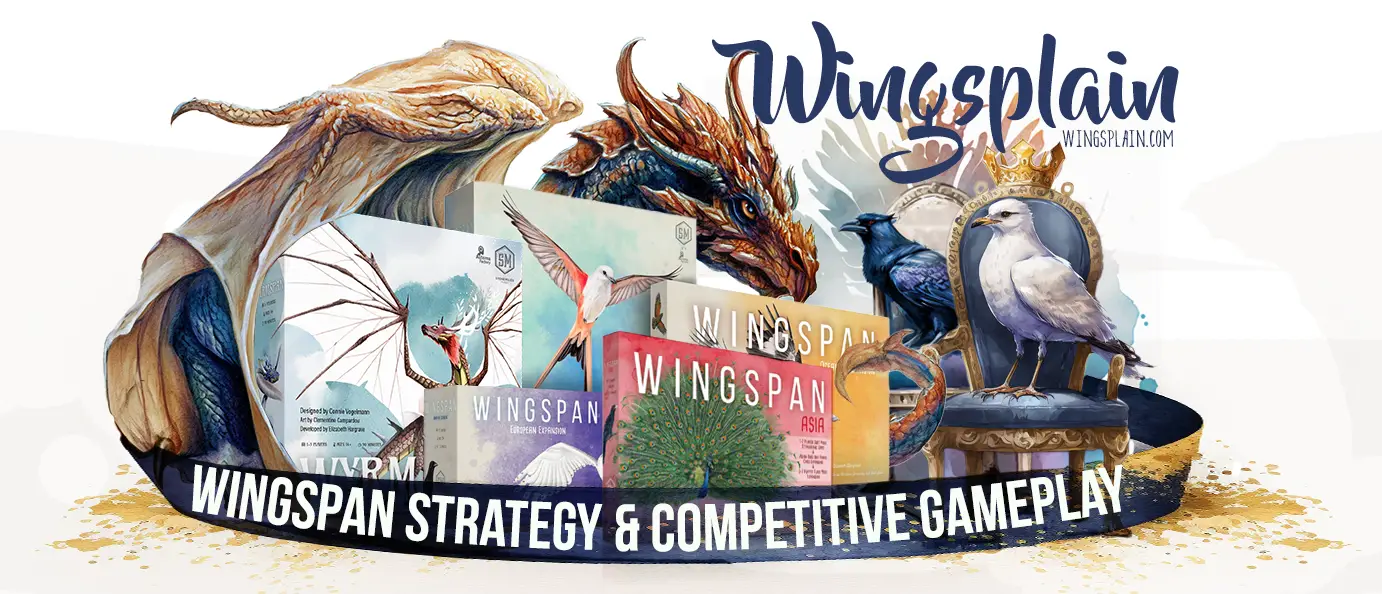
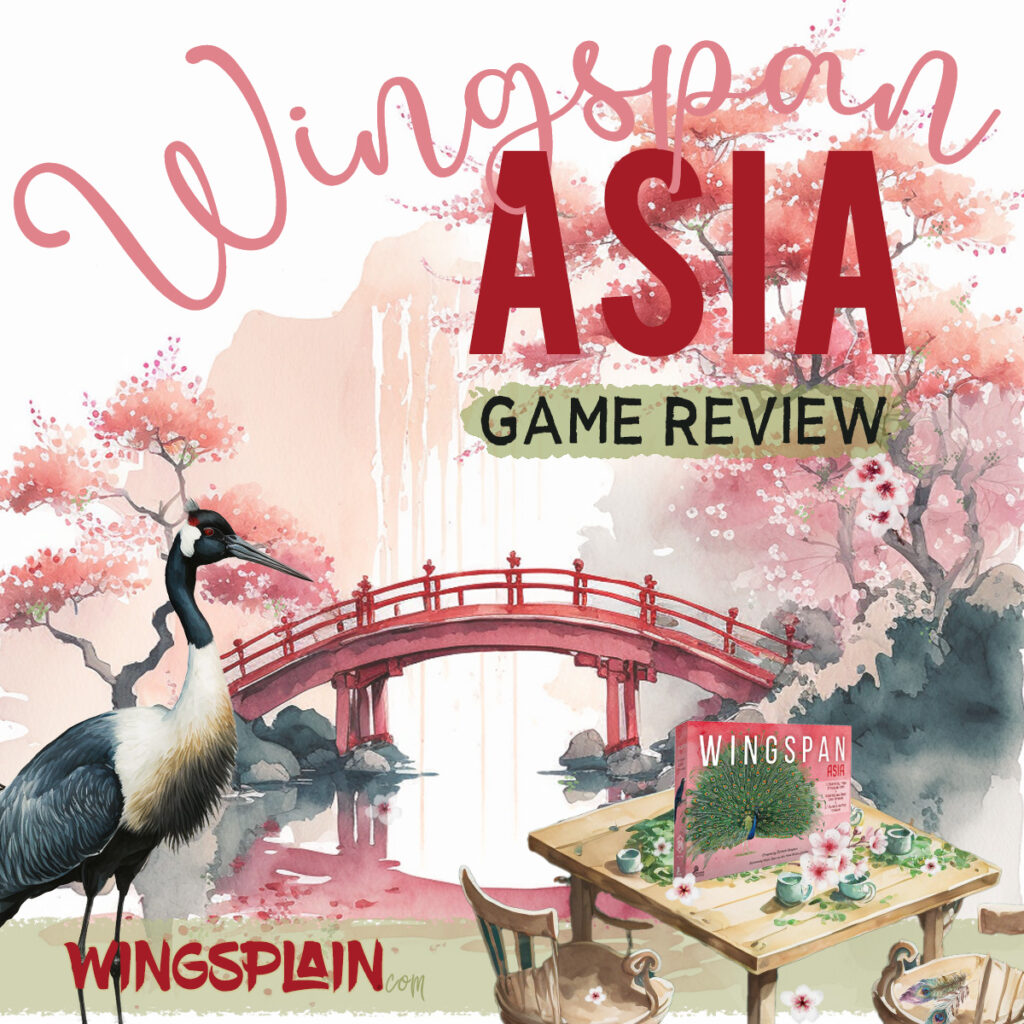


I love how the new game modes in Wingspan Asia add so much depth and variety! It’s exciting to see how they’ve integrated the unique ecosystems of the continent. Can’t wait to try them out with my gaming group! Thanks for the insightful review!
I love the new game modes in Wingspan Asia! They add such a fresh twist to gameplay. Can’t wait to try out the new strategies and see how they change the dynamics. Thanks for the detailed review!